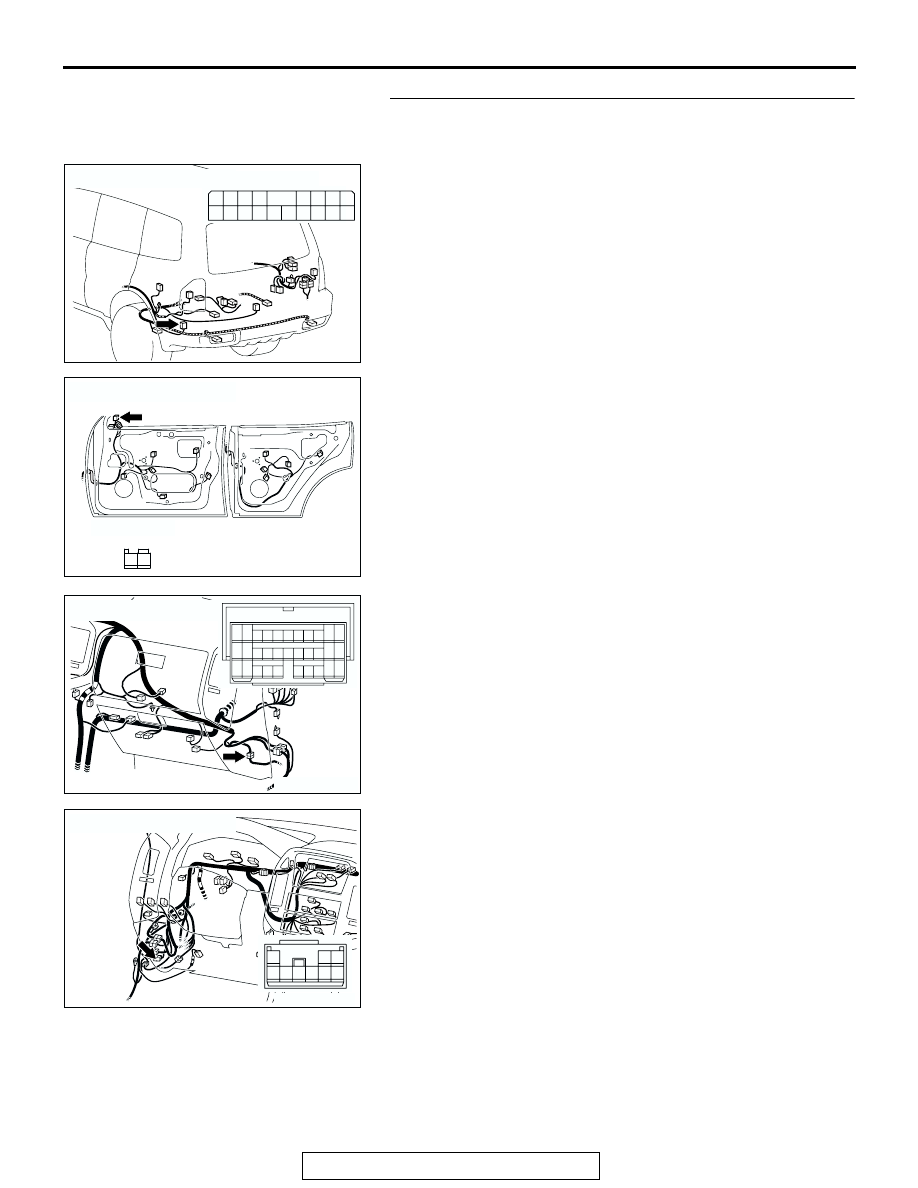Mitsubishi Montero (2002-2004). Manual - part 498

RADIO WITH TAPE PLAYER AND CD PLAYER
TSB Revision
CHASSIS ELECTRICAL
54A-163
STEP 24. Check the wiring harness between tweeter (RH)
connector H-15 (terminals 1 and 2) and amplifier connector
G-19 (terminals 12 and 4).
NOTE: Also check intermediate connectors D-15 and D-124. If
intermediate connector D-15 or D-124 are damaged, repair or
replace the connector as described in GROUP 00E, Harness
Connector Inspection
.
Q: Is the wiring harness between tweeter (RH) connector
H-15 (terminals 1 and 2) and amplifier connector G-19
(terminals 12 and 4) in good condition?
YES : Go to Step 25.
NO : Repair the wiring harness. The tweeter (RH) should
sound.
AC204179
CONNECTOR : G-19
AV
HARNESS SIDE
3 2
1110
4
1312
1
9
5
6
1615
7
8
1817
14
AC204181
CONNECTOR : H-15
AI
HARNESS SIDE
1
2
AC204171
CONNECTOR : D-15
AB
10
9
31
30
20 21
7
6
28
17 18
8
19
29
4
3
25 26
14 15
1
23
12
2
13
24
5
16
27
11
22
32
AC204170
CONNECTOR : D-124
CW
3
9
2
8
6
5
7
4
1